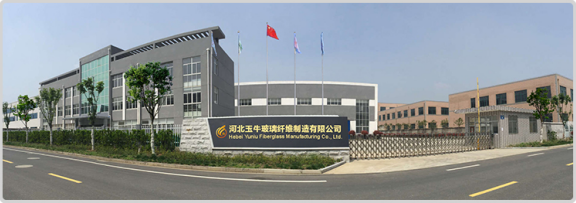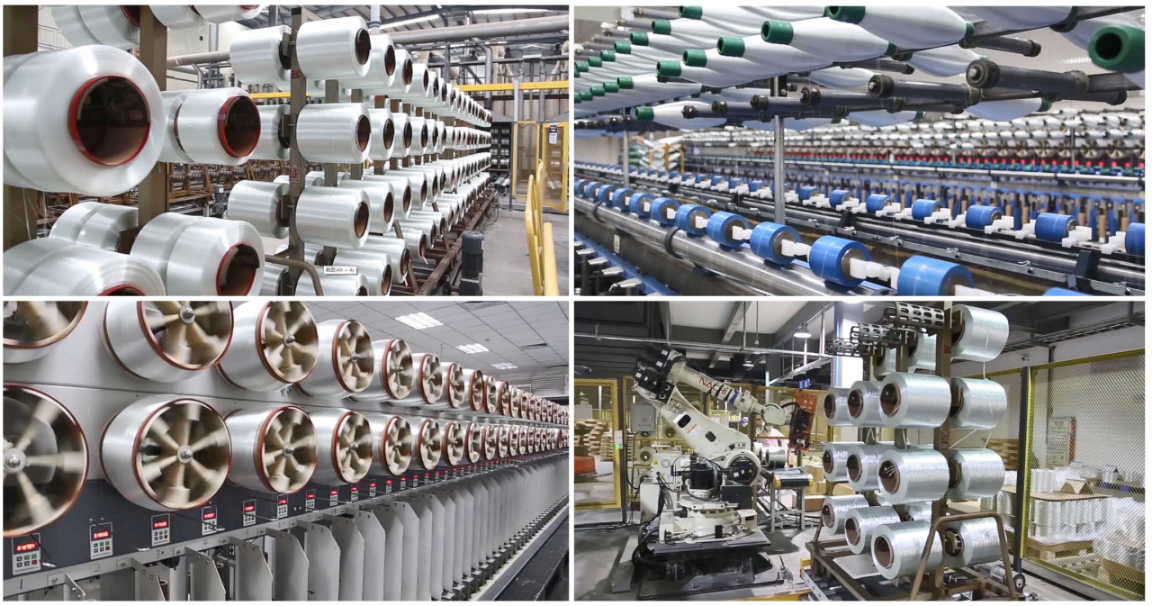3d braided composites are formed by weaving dry preformed parts using textile technology. The dry preformed parts are used as reinforcement, and resin transfer molding process (RTM) or resin membrane infiltration process (RFI) is used to impregnate and cure, directly forming the composite structure. As an advanced composite material, it has become an important structural material in the field of aviation and aerospace, and has been widely used in the fields of automobiles, ships, construction, sports goods and medical instruments. The traditional theory of composite laminates can not meet the mechanical properties analysis, so scholars at home and abroad have established new theory and analysis methods.
Three-dimensional braided composite is one of the imitated woven composite materials, which is reinforced by the fiber braided fabric (also known as three-dimensional preformed parts) woven by the braided technology. It has high specific strength, specific modulus, high damage tolerance, fracture toughness, impact resistance, crack resistance and fatigue and other excellent characteristics.
The development of THREE-DIMENSIONAL braided composites is due to the low interlaminar shear strength and poor impact resistance of composite materials made from unidirectional or bi-directional reinforcement materials, which cannot be used as main load bearing parts. L. R. Sanders introduced three-dimensional braided technology into engineering application in 977. The so-called 3D braided technology is a three-dimensional unstitch-free complete structure that is obtained through the arrangement of long and short fibers in space according to certain rules and interlacing with each other, which eliminates the problem of interlayer and greatly improves the damage resistance of composite materials. It can produce all kinds of regular shape and special-shaped solid body, and make the structure have multi-function, that is, weaving multilayer integral member. At present, there are about more than 20 ways of three-dimensional weaving, but there are four commonly used, namely polar weaving
braiding), diagonal weaving (diagonalbraiding or packing
braiding), orthogonal thread weaving (orthogonal braiding), and warp interlock braiding. There are many types of THREE-DIMENSIONAL braiding, such as two-step three-dimensional braiding, four-step three-dimensional braiding and multi-step three-dimensional braiding.
RTM process characteristics
An important development direction of RTM process is the integral molding of large components. VARTM, LIGHT-RTM and SCRIMP are the representative processes. The research and application of RTM techniques involve many disciplines and technologies, which is one of the most active research fields of composites in the world. His research interests include: preparation, chemical kinetics and rheological properties of resin systems with low viscosity and high performance; Preparation and permeability characteristics of fiber preform; Computer simulation technology of molding process; On-line monitoring technology of forming process; Mold optimization design technology; Development of new device with special agent In vivo; Cost analysis techniques, etc.
With its excellent process performance, RTM is widely used in ships, military facilities, national defense engineering, transportation, aerospace and civil industry. Its main characteristics are as follows:
(1) Strong flexibility in mold manufacturing and material selection, according to different production scales,
The change of equipment is also very flexible, the output of products between 1000~20000 pieces/year.
(2) It can manufacture complex parts with good surface quality and high dimensional accuracy, and has more obvious advantages in the manufacturing of large parts.
(3) Easy to realize local reinforcement and sandwich structure; Flexible adjustment of reinforcement material classes
Type and structure designed to meet different performance requirements from civil to aerospace industries.
(4) Fiber content up to 60%.
(5) RTM molding process belongs to a closed mold operation process, with clean working environment and low styrene emission during the molding process.
(6) RTM molding process has strict requirements on the raw material system, which requires the reinforced material to have good resistance to resin flow scour and infiltration. It requires the resin to have low viscosity, high reactivity, medium temperature curing, low exothermic peak value of curing, small viscosity in the leaching process, and can gel quickly after injection.
(7) Low pressure injection, general injection pressure <30psi(1PSI =68.95Pa), can use FRP mold (including epoxy mold, FRP surface electroforming nickel mold, etc.), high degree of freedom of mold design, mold cost is low.
(8) The porosity of products is low. Compared with the prepreg molding process, RTM process requires no preparation, transportation, storage and freezing of prepreg, no complicated manual layering and vacuum bag pressing process, and no heat treatment time, so the operation is simple.
However, RTM process can greatly affect the properties of the final product because the resin and fiber can be shaped through impregnation in the molding stage, and the fiber flow in the cavity, the impregnation process and the curing process of the resin can greatly affect the properties of the final product, thus increasing the complexity and uncontrollability of the process.
Post time: Dec-31-2021


